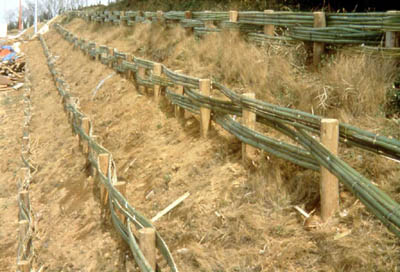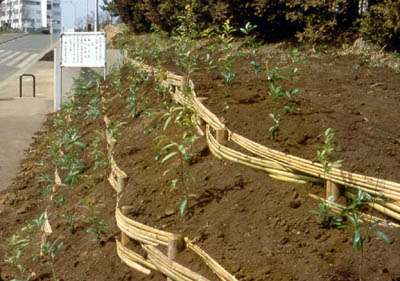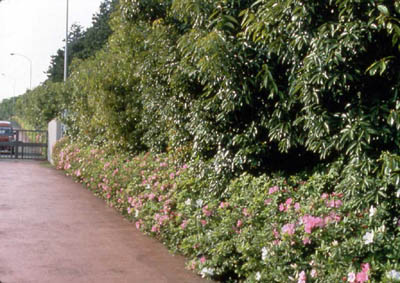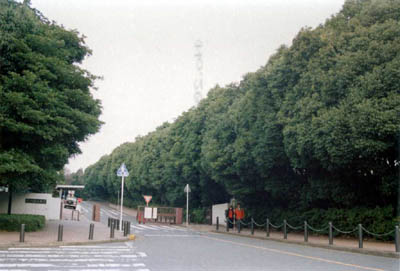 Building “native forests of native trees”
 Multi-layered native forests have various ecological functions including preservation of water supply sources, purification of water, disaster mitigation and environment protection. Building native forests of native trees is an attempt to restore such ecological functions. Multi-layered native forests have various ecological functions including preservation of water supply sources, purification of water, disaster mitigation and environment protection. Building native forests of native trees is an attempt to restore such ecological functions.
 Single-layered plant communities like grass have only one thirtieth of ecological functions that native forests do, and what is worse, they almost prepetually need periodical care such as mowing, weeding and spraying agricultural chemicals. Monoculture of needle-leaved trees for lumber production also needs periodical management including pruning, thinning and weeding. It will be continued if it economically pays. Single-layered plant communities like grass have only one thirtieth of ecological functions that native forests do, and what is worse, they almost prepetually need periodical care such as mowing, weeding and spraying agricultural chemicals. Monoculture of needle-leaved trees for lumber production also needs periodical management including pruning, thinning and weeding. It will be continued if it economically pays.
 For regeneration of native forests seedlings of main species from the potential natural vegetation* should be used. They are cultivated in pots until their root system fully develops, and mixed and planted closely together according to the system of a natural forest. Planted seedlings are basically left under the management of nature, natural selection. As time passes, they grow into a qusai-natural forest with various ecological functions. For regeneration of native forests seedlings of main species from the potential natural vegetation* should be used. They are cultivated in pots until their root system fully develops, and mixed and planted closely together according to the system of a natural forest. Planted seedlings are basically left under the management of nature, natural selection. As time passes, they grow into a qusai-natural forest with various ecological functions.

*potential natural vegetation; the most developed vegetation that the total natural environments in one area could support, supposing every human disturbance wes deleted from the area. 
|
*A slope covered with exotic grass along the path from the main entrance, Yokohama National University(Feb. 1997)
|
*Topsoli was added, and potted seedlings of the main species from the potential natural vegetation were mixed and planted closely.(Jun. 1978)
|
*Same place after 3 years Trees grew 3 meters. Shrubs with flowers were planted as a forest margin community.(May. 1981)
|
*Same place after 22 years.(Dec. 2000)
|

![Reforestation for life from IGES-JISE to the world
[one forest in each town] campaign
Akira Miyawaki
Director, IGES-Japanese Center for International Studies in Ecology (IGES-JISE)](../webmaterial/ENrfl.gif)






